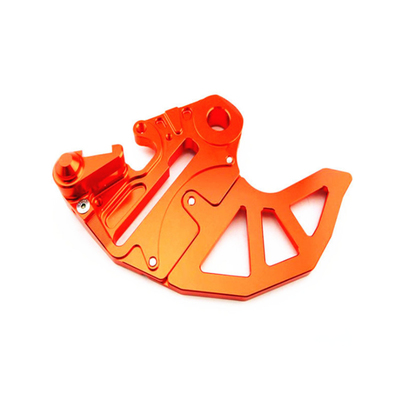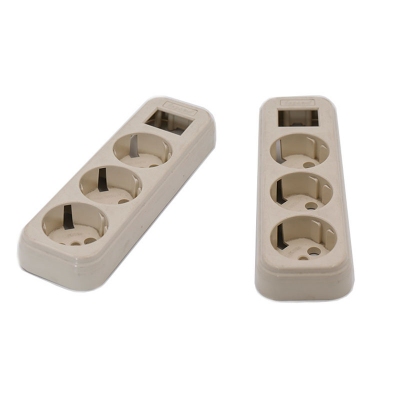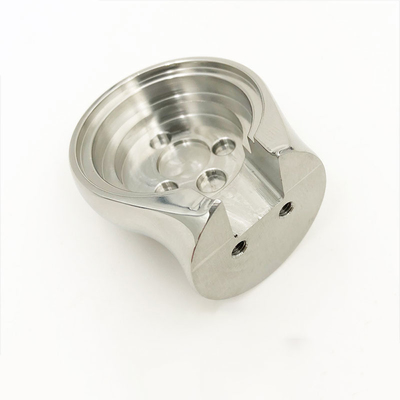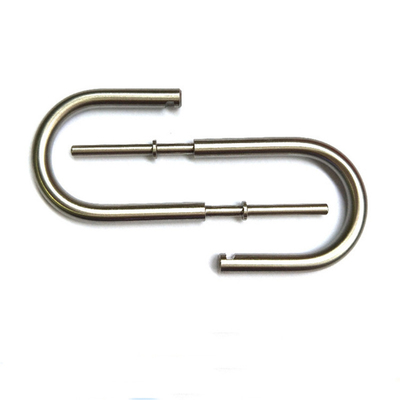The Technology Application Of High-Precision And High-Speed Machining
The Technology Application Of High-Precision And High-Speed Machining
|
High-speed machining requires a high-speed spindle unit and a high-speed machine tool feed drive unit. High feed rates also require high acceleration. For example, the stroke of a high-speed machine tool is usually between 500 and 1 000mm. If the feed rate of the machine tool is increased from zero to 40m/min within such a short distance, the feed acceleration value of the machine tool should exceed 1g (9.8m/s2). ). When processing curved surfaces, the feed acceleration is more important. Its acceleration is proportional to the square of the feed rate. If a servo motor cannot produce a sufficiently high acceleration, it cannot perform high-speed, high-precision machining. At present, the main shaft unit mainly adopts vector-controlled AC asynchronous motors. Due to the heating of the rotor of the asynchronous motor, the high-speed spindle motor with internal cooling is now also used; in addition, the structure of the synchronous motor is also studied. In order to achieve large feed acceleration (deceleration) speed, linear motors have been increasingly used. When high-speed machining, safety issues are very important. Because the chips in high-speed machining are shot out like bullets, the safety requirements for the system are very high. |
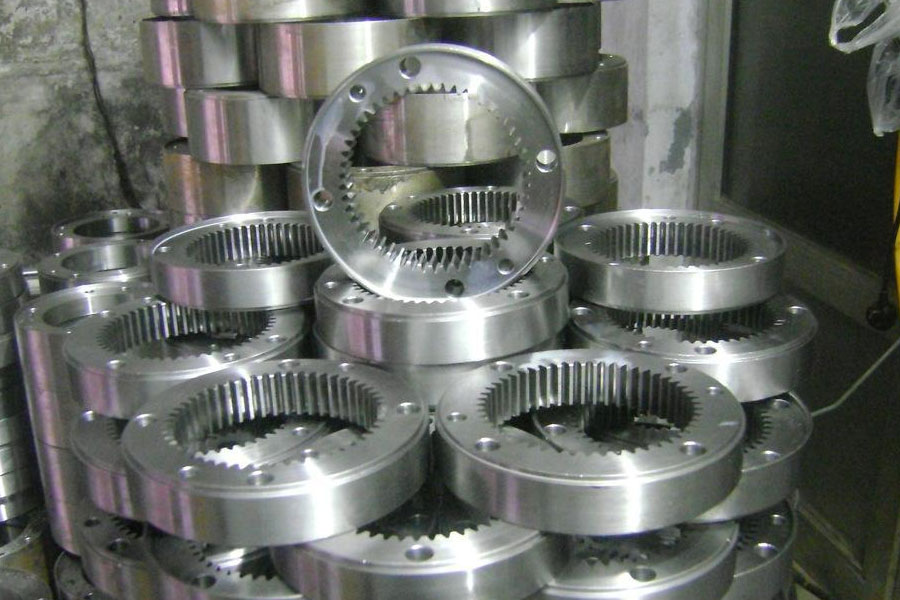
The CNC system converts the input part program into the shape trajectory, feed rate and other command information to be processed, and continuously sends the position command to each servo axis. In order to obtain high-speed and high-precision, CNC must select the best feed rate according to the shape trajectory of the part machining, and generate the position command at the highest possible feed rate within the allowable accuracy. Especially at corners and small radii, CNC should be able to determine how much machining speed changes will affect the accuracy, and before the tool reaches such a point, the tangent speed of the tool is automatically decelerated. For mold machining, the general program segment is very small, but the program is very long, so special control methods must be used to achieve high-precision and high-speed machining. The servo system requires accurate and fast drive in order to process high-precision mechanical parts at high speed. For this reason, the servo system must have the ability to respond quickly and suppress disturbances. At the same time, the servo system must not generate vibration and eliminate resonance with the machine tool.
The requirements for CNC for high-precision and high-speed machining can be summarized as follows:
- (1) It can process blocks at high speed.
- (2) The information flow can be processed and controlled quickly and accurately to minimize the machining error.
- (3) It can minimize the mechanical impact and make the machine tool move smoothly.
- (4) It must have enough capacity to allow large-capacity machining programs to run at high speed; or have the ability to transmit large amounts of data through the network.
- (5) Servo motors, spindle motors and sensors with high resolution and high speed operation.
- (6) Because it is processed at high speed, reliability and safety are very important.
The high-speed and high-precision functions mainly include the following aspects:
- 1. Feedrate control and acceleration (deceleration) machining functions (including corner deceleration machining): The error in high-speed machining is mainly caused by the lag of the control system's acceleration (deceleration) and the lag of the servo system. Therefore, the control system must try to reduce the errors in these two aspects. For example, feedforward control is used to reduce errors caused by servo lag. Use digital servo technology to improve servo control. Due to the use of digital servo technology, the speed gain and position gain of the servo system can be improved, thus reducing the error caused by the servo lag. Reduce the error caused by acceleration (deceleration) speed lag. In high-speed machining, acceleration (deceleration) and feed rate are the most important parameters. Only by strictly controlling the acceleration (deceleration) and feed rate in different machining shapes can the high-speed machining process be realized. A large feed rate will produce large errors during the transition of the system, such as corners. In order to achieve high-speed machining, the feed rate must be controlled. In addition, using the acceleration (deceleration) before interpolation can also reduce the error caused by the acceleration (deceleration) lag.
- 2. Look-ahead control. If the feedrate and acceleration and deceleration are pre-calculated in different machining shapes, the CNC system can pre-calculate the motion trajectory and Motion speed; that is, pre-process the program to be run, according to the above-mentioned control feedrate and acceleration and deceleration methods, pre-calculate the feedrate and acceleration and deceleration of some program segments, and then calculate the motion The geometric trajectory is then sent to the multi-segment buffer. When running, the tool moves at a high speed cnc machining at a certain speed, but the error of the machining shape is still small. This is the principle of "forward control", sometimes called "forward control" and "forward control".
- 3. Using the high-speed distribution of remote buffer and DNC operation, it is necessary to quickly transfer the program from the input terminal to the CNC system for machining parts composed of a large number of programs. After the CNC reads a program, it calculates the data of the program, generates a distribution pulse for each axis, and sends it to the servo system to make the servo motor run. The time for generating the allocated pulse (the time for the program segment machining) is an important factor in the performance of the CNC. For a program segment, the high-speed DNC operation allows (using remote buffers) the time required to generate the distribution pulse is greatly reduced. This function shortens the distribution pulse for generating a block, thus ensuring that the program composed of a series of small blocks does not stop between blocks. For example, when performing DNC operation, a program composed of a series of 1mm blocks (3-axis linear interpolation) can work at a speed of 60m/min, and the assigned execution will not be interrupted. Due to the use of the remote buffer function, high-speed data input is realized, which also ensures high-speed machining.
- 4. Improve system resolution. For example, nano-interpolation function. It uses a processor with high-speed RISC. Interpolation in nanometers for machining can make the machine match the machining performance with the best feed rate.
- 5. The control of jerk. When the curve is moving, the change of acceleration may cause mechanical vibration. The control of jerk is to automatically detect such movement to reduce the speed and reduce the mechanical shock to reduce the surface roughness value.
- 6. NURBS interpolation: When using CAD to design molds, NURBS is widely used to express free curves. Compared with general CNC, NURBS has a higher transmission rate and a shorter program. At the same time, the machined parts are closer to the geometry of the CAD design.
For high-speed, high-precision machining functions, when selecting, it depends on whether the function is selected based on machining speed or machining accuracy. In order to ensure that the machining error of the high-speed system is small, the system needs an error compensation device. These compensations include: full stroke linear compensation and nonlinear bending compensation, pitch compensation, backlash compensation, over-quadrant compensation, tool offset and thermal expansion, static friction, dynamic friction compensation, etc. With abundant network functions and software packages, the best system suitable for machine tools can be constructed.
- (1) Centralized management. One computer can be used to control multiple machine tools, which is convenient for monitoring, running and machining operations, and for transmission and management of NC programs.
- (2) Remote support and service. In the future, CNC is in a high-speed state, so the requirements for reliability are very high. The double inspection function is an important measure to ensure the safe operation of the CNC system.
High-precision, high-speed machining technology is the development of traditional machining technology, it has no essential difference with traditional CNC machining. For high-precision, high-speed machining, the goal of machine tools is to process high-precision parts at high speed. In order to achieve high-speed machining on the basis of accuracy, there are three important factors: mechanical system, CNC numerical control device and drive device. High-speed and high-precision machining requires the machine tool to have high rigidity and lighter moving parts, especially the feed and spindle parts. The second is the CNC numerical control system, which is the unit that issues speed and position commands. First of all, it is required that the instructions can be transmitted accurately and quickly. After machining, a position instruction is issued to each coordinate axis. The servo system must drive the tool to move accurately according to the instruction.
Link to this article: The Technology Application Of High-Precision And High-Speed Machining
Reprint Statement: If there are no special instructions, all articles on this site are original. Please indicate the source for reprinting:https://www.cncmachiningptj.com/,thanks!
 PTJ CNC shop produces parts with excellent mechanical properties, accuracy and repeatability from metal and plastic. 5 axis CNC milling available.Machining high-temperature alloy range inclouding inconel machining,monel machining,Geek Ascology machining,Carp 49 machining,Hastelloy machining,Nitronic-60 machining,Hymu 80 machining,Tool Steel machining,metal enclosur etc.,. Ideal for aerospace applications.CNC machining produces parts with excellent mechanical properties, accuracy and repeatability from metal and plastic. 3-axis & 5-axis CNC milling available.We will strategize with you to provide the most cost-effective services to help you reach your target,Welcome to Contact us ( [email protected] ) directly for your new project.
PTJ CNC shop produces parts with excellent mechanical properties, accuracy and repeatability from metal and plastic. 5 axis CNC milling available.Machining high-temperature alloy range inclouding inconel machining,monel machining,Geek Ascology machining,Carp 49 machining,Hastelloy machining,Nitronic-60 machining,Hymu 80 machining,Tool Steel machining,metal enclosur etc.,. Ideal for aerospace applications.CNC machining produces parts with excellent mechanical properties, accuracy and repeatability from metal and plastic. 3-axis & 5-axis CNC milling available.We will strategize with you to provide the most cost-effective services to help you reach your target,Welcome to Contact us ( [email protected] ) directly for your new project.

- 5 Axis Machining
- Cnc Milling
- Cnc Turning
- Machining Industries
- Machining Process
- Surface Treatment
- Metal Machining
- Plastic Machining
- Powder Metallurgy Mold
- Die Casting
- Parts Gallery
- Auto Metal Parts
- Machinery Parts
- LED Heatsink
- Building Parts
- Mobile Parts
- Medical Parts
- Electronic Parts
- Tailored Machining
- Bicycle Parts
- Aluminum Machining
- Titanium Machining
- Stainless Steel Machining
- Copper Machining
- Brass Machining
- Super Alloy Machining
- Peek Machining
- UHMW Machining
- Unilate Machining
- PA6 Machining
- PPS Machining
- Teflon Machining
- Inconel Machining
- Tool Steel Machining
- More Material

